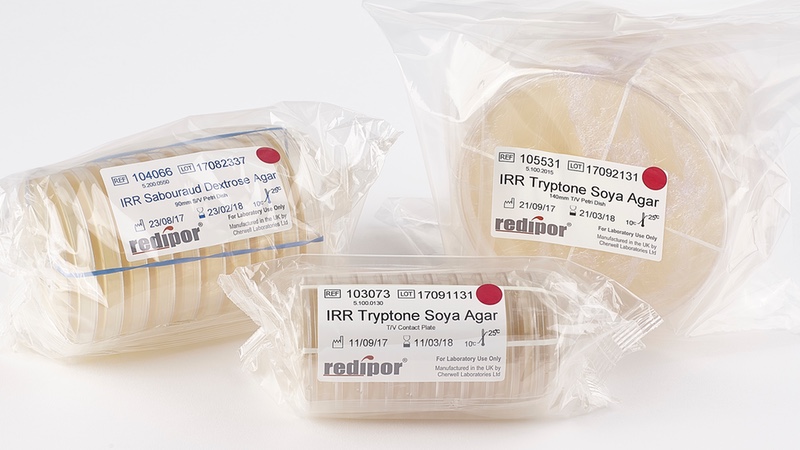In a recent survey by Pharmig, the UK-based not-for-profit body for microbiologists working in pharmaceutical and related industries, 9% of respondents said that they exclusively prepare their culture media in-house, while a further 36% adopt a combined approach of both in-house manufacture and commercially available pre-prepared media.
Usually, there is a very good reason for media to be prepared in-house rather than mere preference; for example, it may be that the media is unique and designed to individual product specifications, so historically has not been available from a prepared media supplier.
That said, many laboratories now outsource all of their media preparation, as some media suppliers can offer a broad range of services to meet the needs of every laboratory, whatever the volume and mixture of media required.
Preparing media in-house does have some advantages, the main one being availability. Media can be ready for use in as much time as it takes to produce it, as opposed to ordering it and waiting for delivery. However, it should be noted that quality control testing prior to use will always delay the availability of media. In-house preparation can also appear more cost-effective, although this could be a misconception once the need for dedicated facilities, equipment and resources are taken into account.
Other concerns around sourcing external manufacturers can include issues regarding sterility and the short shelf-life of some specialist media, but these can be addressed by the manufacturers. Therefore, apart from potential gaps in availability, ordering prepared culture media from a supplier has several benefits.
Consistency and quality
A supplier has all the required facilities, resources and validation processes, lowering overheads and removing the hassle associated with in-house culture media manufacture. Also, time spent qualifying multiple suppliers for basic ingredients is not needed, as there is a single point of contact for all media requirements. External suppliers are also often able to scale product orders in line with company-specific demands.
Prepared media received from a reputable external supplier will be consistent and of guaranteed quality. There should be proof that packaging is suitable and validated for the duration of the media shelf-life and, where applicable, with confirmation that it is impermeable to vaporised hydrogen peroxide (VHP) used in many decontamination processes. Additionally, plates will have been conditioned prior to packing, removing all excess moisture in the plate pack.

Prepared media received from a reputable external supplier will be consistent and of guaranteed quality
Testing and validation
Media manufacturers will ensure both formulation and testing standards meet regulatory guidelines. Without the requirement for in-house facilities and equipment dedicated to media manufacturing, this saves costs and frees-up staff resources for other tasks.
An external supplier eliminates the need for calibrating and qualifying equipment involved in media manufacture along with its maintenance and routines for training staff.
In addition to the associated time and cost savings, the responsibility for ensuring all stages of every process are conducted correctly – such as environmental monitoring – now lies with the supplier at its facilities and expert teams. The supplier should provide certification that all media was sterility-tested and inspected prior to packing and dispatch.
Prepared media from a good external supplier will already have been validated for specified storage and subjected to stability studies for the duration of its shelf-life. Any irradiation, including dose mapping, will also have been conducted by a sterilisation service provider and qualified by the external media supplier. It is the manufacturer’s responsibility to arrange requalification of the irradiation process at regular intervals.
A good external supplier can often provide bespoke solutions that are difficult to manufacture in-house due to time and expense. For example, when needing small batches, tweaking formulations with less readily available raw materials, or modifying packaging for specific applications.
Effective transport and storage
To ensure accurate test results, it is imperative that prepared culture media remains sterile. Media manufacturers can often supply a range of packing options to help best secure prepared media and ensure its optimal condition. They do so better than any in-house storage facilities could manage cost-effectively. For example, media can be double- or triple-wrapped and irradiated, allowing the removal of layers at crucial stages of the intended point-of-use. Packaging can also be designed to help users identify types of prepared media by colour, label and shape, as well as ensuring that it can best support the media type.
To further understand the debate around in-house manufactured prepared media versus external sourcing, Cherwell Laboratories has published The Pharmaceutical and Cleanroom’s Industry’s Pocket Guide to Prepared Culture Media.





